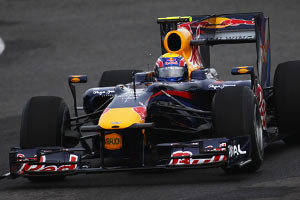agree
I would say delta T of ~5°C would be a very good radiator
not sure we see the full plumbing of the rad in the photo, the entry could be on
the other side of the core.
Maybe they use top and bottom core seperate for LHS/RHS bank of the engine and
combine with the Y-piece for the return to the sucktion side of the WP (water pump)
Maybe the have different radiator sections for the heads and the block of the engine.
In some other applications people use different radiators for the head and the block of the engine, using two WP´s to control temp indepentend in heads (as cool as possible to avoid knock) and block (hotter for less friction)
Just some random thoughts - not sure if this is done or even permitted in F1
- Login or Register
No account yet? Sign up



